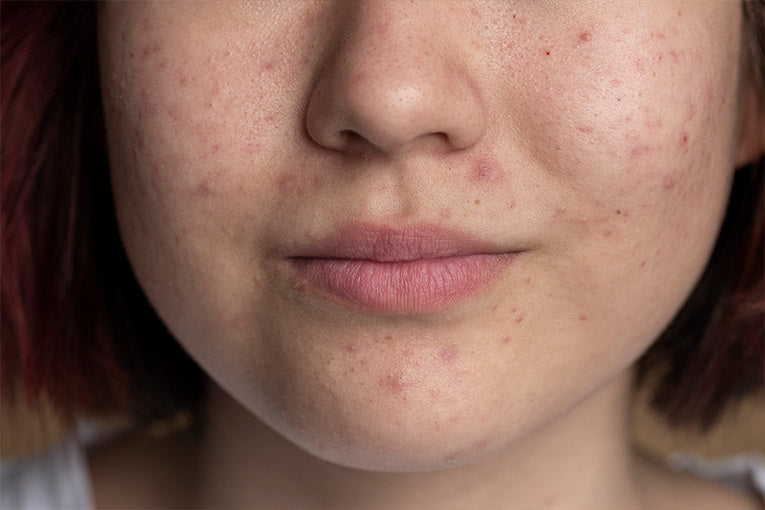Introduction
Autoimmune disorders are on the rise worldwide, and among them, lupus holds a unique position because of its unpredictable nature. Medically termed Systemic Lupus Erythematosus (SLE), this chronic autoimmune disease disproportionately affects women, especially in their reproductive years between the ages of 15 and 45. The challenge with lupus is that its symptoms often mimic other diseases, leading to delayed diagnosis. Recognizing the early signs of lupus in females is, therefore, crucial for timely intervention and prevention of severe complications.
In this article, we’ll walk you through the 10 early signs of lupus in females, how they manifest, and why ignoring them could put your health at risk. Whether you’re experiencing mild unexplained fatigue, skin rashes, or joint pain, understanding these signals will help you take proactive steps toward better health.
1. Persistent Fatigue Beyond Normal Tiredness

One of the most widely reported early signs of lupus in females is unexplained fatigue. Unlike ordinary tiredness that improves with rest, lupus-related fatigue can feel overwhelming and persistent. Women often describe it as a lack of energy that disrupts work, personal life, and even simple daily tasks. This happens because the immune system is in a state of overdrive, causing inflammation and draining the body’s reserves. If you notice extreme exhaustion without any obvious cause, consider it as one of the symptoms lupus in women that should not be overlooked.
2. Unexplained Joint Pain and Stiffness

Joint pain is another key marker among the symptoms of lupus disease in women. The pain usually occurs in multiple joints at once, especially in the hands, knees, and wrists. Unlike arthritis, lupus-related joint pain may appear suddenly, move from one joint to another, and cause morning stiffness. Some women also experience mild swelling in their fingers or ankles. If you are young, otherwise healthy, and experiencing unexplained joint discomfort, this could be one of the early signs of lupus in females.
3. Butterfly-Shaped Rash on the Face

The malar rash, often described as a butterfly-shaped rash across the cheeks and nose, is perhaps the most classic sign of lupus. It may develop suddenly or after sun exposure. Photosensitivity is very common in women with lupus, meaning rashes or skin irritation worsen when exposed to sunlight. This rash is not only cosmetic but also a significant clinical indicator used by doctors in diagnosis. Since skin changes are visible, they can serve as an early warning sign among the symptoms lupus in women.
4. Extreme Sensitivity to Sunlight

Sunlight sensitivity is closely connected to the butterfly rash. Women with lupus often notice that spending just a little time outdoors triggers skin eruptions, itching, or extreme tiredness. This is because ultraviolet rays can activate the immune system, worsening inflammation. While many people get sunburned occasionally, lupus-related photosensitivity is unique and recurring. This is another of the early signs of lupus in females that deserves immediate medical attention.
5. Hair Thinning or Sudden Hair Loss

Another overlooked but important sign is hair thinning. Lupus-related inflammation can affect the scalp, leading to hair loss in patches or diffuse thinning across the scalp. Women may also notice that their hair becomes brittle and fragile. For some, the hair loss extends to eyebrows or eyelashes as well. While stress and hormonal issues can also cause thinning, lupus-related hair loss often appears suddenly and progresses quickly. Recognizing this as part of the symptoms of lupus disease in women helps in early detection.
6. Recurrent Low-Grade Fever

Do you often run a mild fever without any infection? This can be one of the early signs of lupus in females. A persistent temperature around 100°F–101°F, with no clear reason such as flu or cold, signals systemic inflammation. The immune system mistakenly attacks healthy tissues, causing the body to react with fever. Many women brush this off as exhaustion or seasonal illness, but recurrent unexplained fever should be seen as a potential lupus symptom.
7. Swelling in Hands, Feet, or Around the Eyes

Lupus can silently affect the kidneys, leading to fluid retention in the body. One of the earliest visible symptoms lupus in women is puffiness around the eyes in the morning or swelling in the hands and ankles. Because kidney involvement in lupus (lupus nephritis) can cause serious long-term damage, noticing swelling early is vital. Women who frequently see such swelling should not ignore it as simple water retention.
8. Chest Pain and Breathing Difficulties
Inflammation caused by lupus can affect the heart (pericarditis) or lungs (pleuritis). Women may feel chest tightness, sharp pain while breathing deeply, or shortness of breath during mild activity. This symptom often appears early but is misattributed to stress or muscle strain. Since lupus has the potential to damage cardiovascular and pulmonary health, chest-related symptoms are among the most important early signs of lupus in females.
9. Mouth and Nose Ulcers
Recurrent sores inside the mouth or nose are common symptoms of lupus disease in women. These ulcers are often painless, making them easy to ignore. However, their frequent recurrence is a red flag. In clinical examinations, doctors consider the presence of these ulcers as a strong diagnostic clue for lupus.
10. Cold Hands and Feet (Raynaud’s Phenomenon)
Another visible early indicator is Raynaud’s phenomenon, where fingers or toes turn pale, white, or bluish in response to cold or stress. Women with lupus often complain of tingling, numbness, or pain in their extremities. This happens because lupus inflames blood vessels, restricting blood flow. While it might look harmless, it’s actually one of the important early signs of lupus in females.
Why Women Shouldn’t Ignore These Early Signs

The unpredictable nature of lupus means that it can quietly affect vital organs like the kidneys, brain, and heart before symptoms become severe. Recognizing the early signs of lupus in females allows for timely diagnosis and management, reducing the risk of long-term complications.
Unlike temporary health issues, lupus is chronic and requires consistent care. If you notice multiple symptoms lupus in women, consult a rheumatologist for tests such as ANA (antinuclear antibody), blood work, and imaging studies.
How to Manage Early Symptoms of Lupus Disease in Women
-
Consult a Specialist: Always see a rheumatologist if symptoms persist.
-
Lifestyle Adjustments: Adequate rest, a balanced anti-inflammatory diet, and stress reduction can help.
-
Medication Compliance: Early treatment with prescribed medications can control flares.
-
Sun Protection: Wearing sunscreen and avoiding direct sunlight reduces skin flare-ups.
-
Support Systems: Joining lupus support groups helps women manage emotional stress.
Conclusion
Lupus is often called “the great imitator” because its early symptoms mimic many other conditions. However, awareness is your first line of defense. If you are a woman experiencing fatigue, skin rashes, joint pain, or recurring fevers, don’t dismiss them as minor inconveniences. These could be the early signs of lupus in females that point toward a deeper health issue.
By recognizing the symptoms lupus in women early and taking medical advice promptly, you can manage the disease more effectively, prevent organ damage, and maintain a healthier lifestyle.







